When SHTF, there might be no other reliable sources of food. Preppers and survivalists will have to rely on the bounties nature provides. Hunting your own game will become an essential skill for survival. In North America, deer are abundant and can be a viable source of food in an apocalyptic future. With the right preservation method, you can keep deer meat edible for up to a year. Knowing when to hunt can significantly increase your likelihood of capturing a deer.
The best time to hunt deer is from dawn up to the early morning, and then at dusk up to the evening. This is because it is at these times that deer are most active. Despite this, it’s still possible to successfully hunt deer in the daytime.
Currently, hunting deer is restricted by season, and by day time. Depending on your state, there are a different set of regulations that govern when to hunt, what type can be hunted, and how to hunt deer. In most states, hunting deer at night is prohibited. However, when SHTF and these regulatory system collapses, deer can be hunted all year round.
General Rules When Hunting Any Animal

-
Stay downwind, manage your scent
Most wild animals have an excellent sense of smell, especially deer. When hunting, and stalking game, it helps to be in a position that is downwind relative to the direction of your prey. This is because the scent of humans alerts animals, and scares them away.
By staying downwind, the scent does not travel into the area where the animal is. It makes it possible to get near the deer. Getting as close as possible to your prey will increase the accuracy of your shot.
-
Camouflage
Aside from having an excellent sense of smell, deer also have excellent eyesight and peripheral vision. A good set of camouflaged clothes or tent helps preppers blend in with the environment. This makes it harder to get spotted, and spooking the prey in the process.
-
Be silent
Prey animals are always on the look-out. They have a great sense of smell, eyesight, and hearing. Deer are especially wary, and curious. Like wild hogs, if they hear an unfamiliar sound, they either run away immediately or stop what they are doing and scan their surroundings.
-
Be patient, be still
Deer often scan the surroundings when they hear a noise and are under pressure. Upon producing a loud sound during a pursuit, either from the crunching leaves or stepping on a fallen twig, it’s best to stop moving and stay still for a while.
They have excellent eyesight and any unusual movement makes them suspicious. When hunting or stalking deer, it’s best to move slowly or stay still for as long as you can. Being still for 5 whole minutes, and then taking short breaks to stretch can help minimize the risk that a prey animal will spot the hunter.
Paired with moving slow and being still, hunters should also be patient. It can take hours before a deer appears on a route where the ambush is set. When near a deer and ready to take a shot, one must also be patient and take it slowly to make sure they have the best opportunity to shoot. Taking a hasty shot and missing will waste the previous efforts invested during the day’s hunt.
-
Kill only what you need
When SHTF, there’s no law or organizations that will enforce strict hunting rules. As such, overhunting can become a problem. It’s important to realize that a balance should be struck between hunting and the prey’s population. Only hunt the adults, some females, and more males.
Killing does (female deer), have a greater impact on the animal’s population than killing bucks (male deer). However, there are instances when it is necessary to hunt more does. This is when there’s overpopulation that threatens to destroy the environment through the over-grazing of the deer.
Hunting Time: Dawn vs Dusk
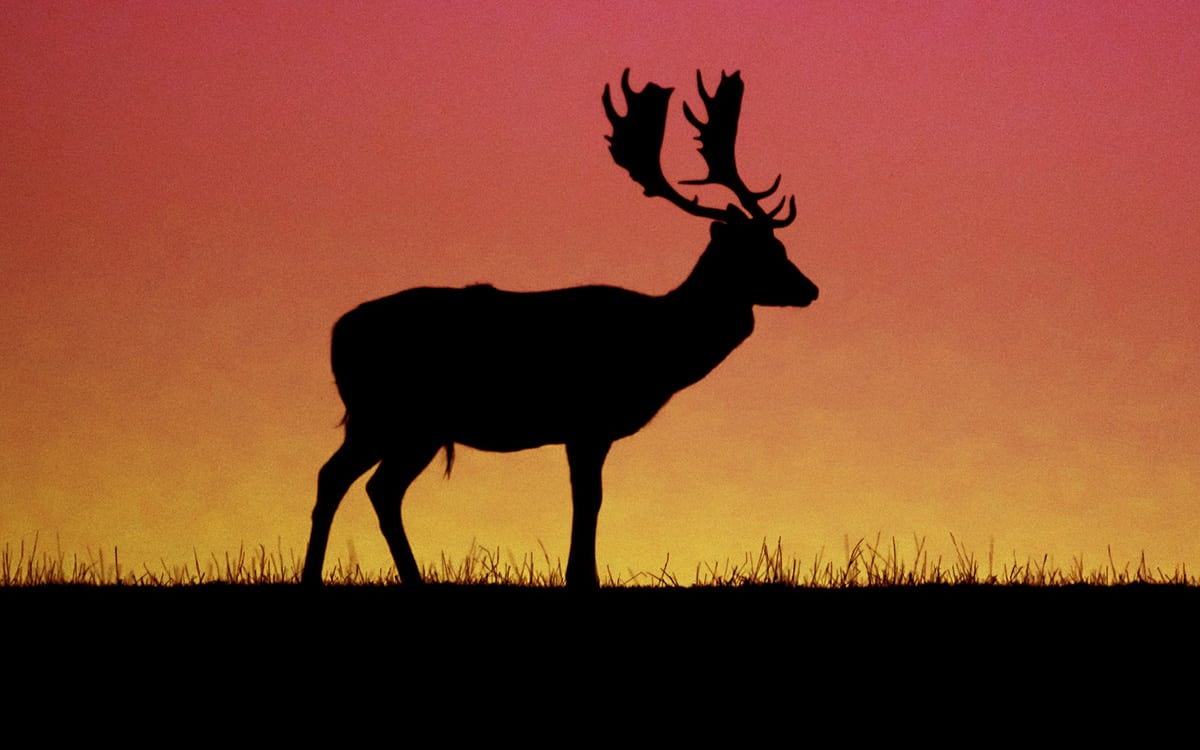
There is no concrete evidence or research on when is the best time to hunt deer. The majority, if not all of the information claiming which is the best time is anecdotal. However, these time frames are not baseless. These are the times when a deer is most active and easy to spot.
Does and bucks generally hide and sleep during the day. This is why it might be harder to spot them during these times. At dusk, they start becoming more active in search of food and will continue to graze and look for fruits until the early morning. Dawn is like the happy hour for a deer and is the time before they go to sleep.
These are the times when they move from their feeding grounds to their bedding grounds and vice versa. Since deer usually sticks to a single route when going to and from their feeding grounds, an ambush can be easily set up along this route before they either go back to sleep or before they wake up to look for food.
Difference in Advantages and Disadvantages
One cannot deny that the two time-frames have their own set of advantages and disadvantages. Hunting at dawn requires the hunter to wake up early, and since hunters often choose to climb a tree and wait there for an ambush, it is harder to perform this when it’s dark. Despite this, it is easier to track a wounded deer in daylight.
Hunting at dusk on the other hand gives the advantage of daylight when preparing for an ambush. It’s easier to climb a tree, without the need to use lights that might spook the deer. A large number of hunters claim that this is the time when they are most successful, however, these are all anecdotal evidence. It will also make it harder to spot a deer as the daylight runs out and the evening closes in.
These two points in the day might be the most suggested times, but one should not disregard the possibility of getting a successful hunt during the midday. Even though this is the bedding times of the deer, there is still some chance that they will get up for a drink or move around.
The Sleeping Deer
A bedded deer would have been a great target for hunting. However, deer often bed in areas where they feel safe, with all the advantages they can get. These areas usually have the wind to the deer’s advantage, while providing good cover.
Bucks tend to bed in different locations. They often chose a high ground with side covers and an easy way out. A bedded deer does not necessarily mean that they’re asleep. They sleep in 5 to 10-minute intervals, often with their eyes wide open.
Their ears are also actively rotating and scanning the environment when they’re bedded. Any unfamiliar sound coming from the forest will make them bolt from their bedding ground.
Tips and Tricks in Hunting Deer
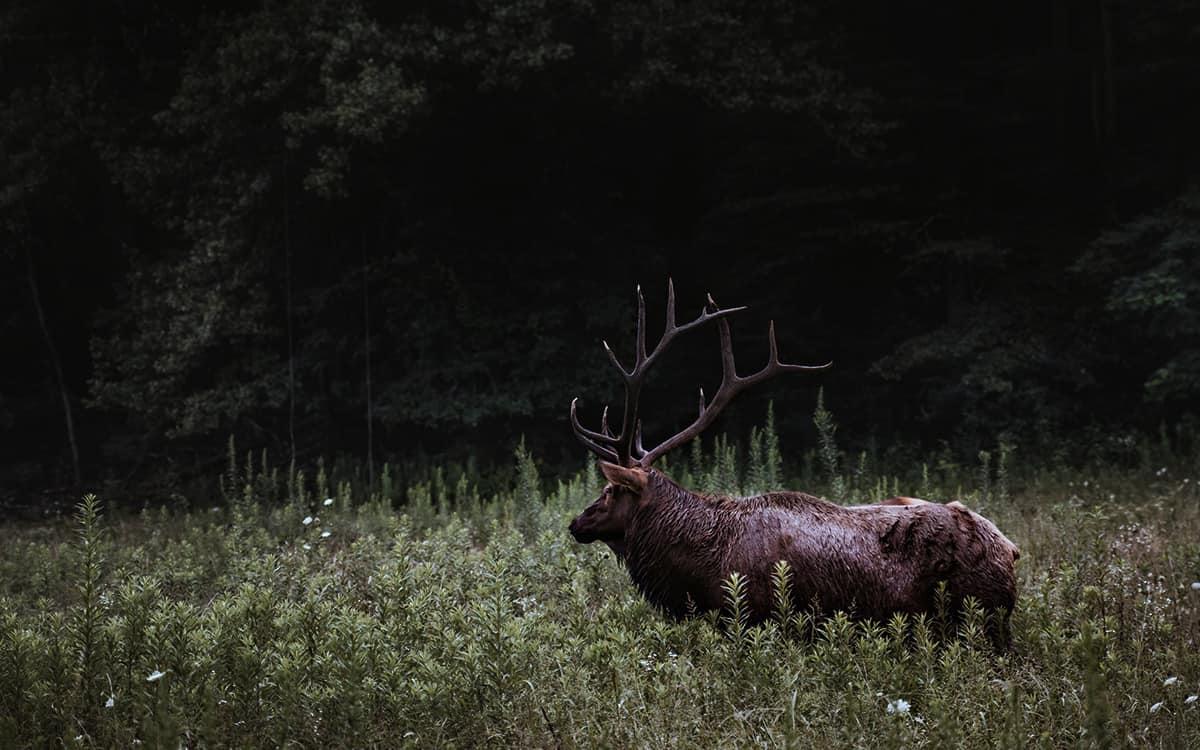
The majority of these tips are for newbie hunters or people that have never hunted in their lives before. These were made in the context that it can be a valuable source of information when SHTF, to help new hunters, and preppers in increasing their success rate in hunting deer.
-
Choose a Hunting Weapon
Hunters have two options, a rifle, or any form of a bow. Rifles have the advantage of being easy to use, easy to master, and a superior range. Being loud, and having non-reusable ammunition are two drawbacks a rifle has. However, as long as a hunter increases their accuracy through practice, it’s the best tool for hunting deer.
Bows and crossbows on the other hand are used mainly by seasoned hunters. It requires mastery to properly use a bow, and even more to be able to use it effectively in hunting deer. The arrows are reusable and are easier to make than bullets. It is virtually silent, which helps prevent scaring other animals in the immediate vicinity.
In addition to the need for mastery, a bow’s range is also shorter than that of a rifle. A hunter needs to be as close as he can get when hunting with a bow.
-
Bring the Correct Gear
Having the right gear will not only increase the hunt’s success rate but will also help the hunter set up an ambush faster.
- Layer of clothes
- Binoculars and range finder for surveying the area
- Scent-elimination spray and field wipes
- Gutting set and lawn bags for field dressing
- Knives (pocket knife, utility knife, multitool)
- Mobile Tree stand
- Lineman’s rope
- Flashlight and extra batteries
- Wind checker
- Deer drag rope
Wearing a layer of clothes is a good idea no matter the weather. In warmer climates, a few of the layers can be removed to cool down. When the weather becomes cooler, more layers can be worn on top of each other.
Clothes made up of cotton should be avoided when hunting in cold weather. Cotton holds on to moisture and will quickly make the hunter uncomfortable, and cold. Hunting requires you to stay put for long durations. Maintaining and regulating the body temperature should be one of the things considered.
-
Survey the Area & Study the Deer’s Habit
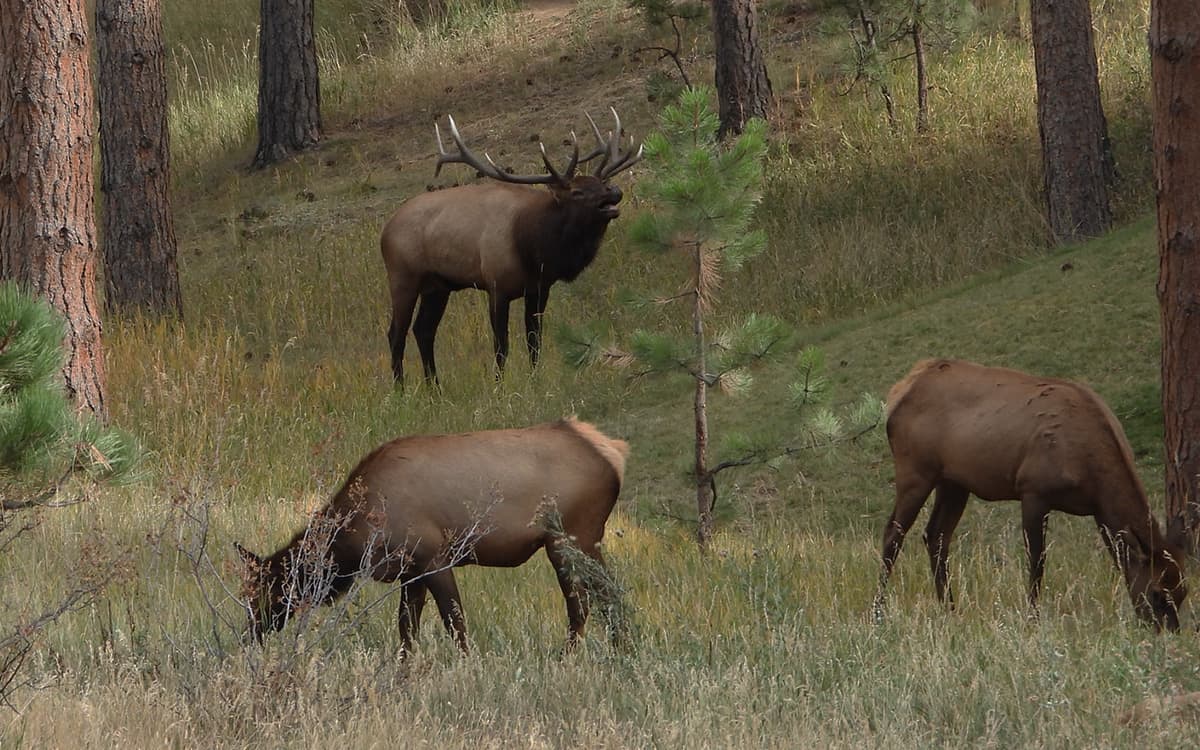
As novice hunters or first-time hunters, the first thing they should worry about is how to have an encounter, rather than how to kill a deer. This can be achieved by studying the area before setting up a stand or an ambush.
A hunter needs to check for evidence that the area is being used as a route or a feeding ground. Trails of grass that has been knocked down or blades that have been cut and trampled on are indicators that a deer passes through it.
Areas that have fruits or acorns are potential feeding grounds for the animals. During the harvest season, some deer can be seen going to agricultural fields to feed on crops.
-
Get Up a Tree
After finding a suitable area where a hunter anticipates encountering a deer, a tree stand or a tree ladder can be set up. The current way to hunt a deer is to set up an ambush on top of a tree. This provides the benefit of having a good vantage point to scan the surroundings and easily spot a buck or a doe. Additionally, this can also be used to study the animal to learn where they are coming from, and where they are going.
Seasoned hunters often use portable tree stands, and tree sticks to climb a tree. These offer portability when deciding to switch locations. Ladder stands on the other hand are bulkier, stationary, and takes a longer time to set up. However, these are easier to use and are novice-friendly.
-
Apply the General Rules
Don’t forget to apply the general rules when hunting any animal. Deer have an excellent sense of smell, and staying downwind is a must. In addition to this, clothes that are worn for the hunt should be washed using unscented detergent.
It is also advisable to store these clothes in a plastic bag along with dirt and leaves from the hunting ground. This makes the clothes smell similar to that of the hunting area. Scent elimination spray should also be used, especially after eating to mask unfamiliar scents.
Wearing a camouflage, combined with walking slowly are good tactics when hunting a deer on foot. Deer have excellent hearing and can hear in a 360o area. The consensus among seasoned hunters is that a deer can detect sounds for up to 75 to 100 yards. What makes their hearing superior is its sensitivity to filter-out unfamiliar sounds from the environment. They are wary and skittish, and any peculiar sound will make them run away.
Being prey animals, they also have excellent vision and peripheral vision. Walking slowly, or being still can make it easier to stalk them. However, it’s still best to stay downwind of a deer or their eating and bedding grounds.
-
Lure the Deer for a Better Shot
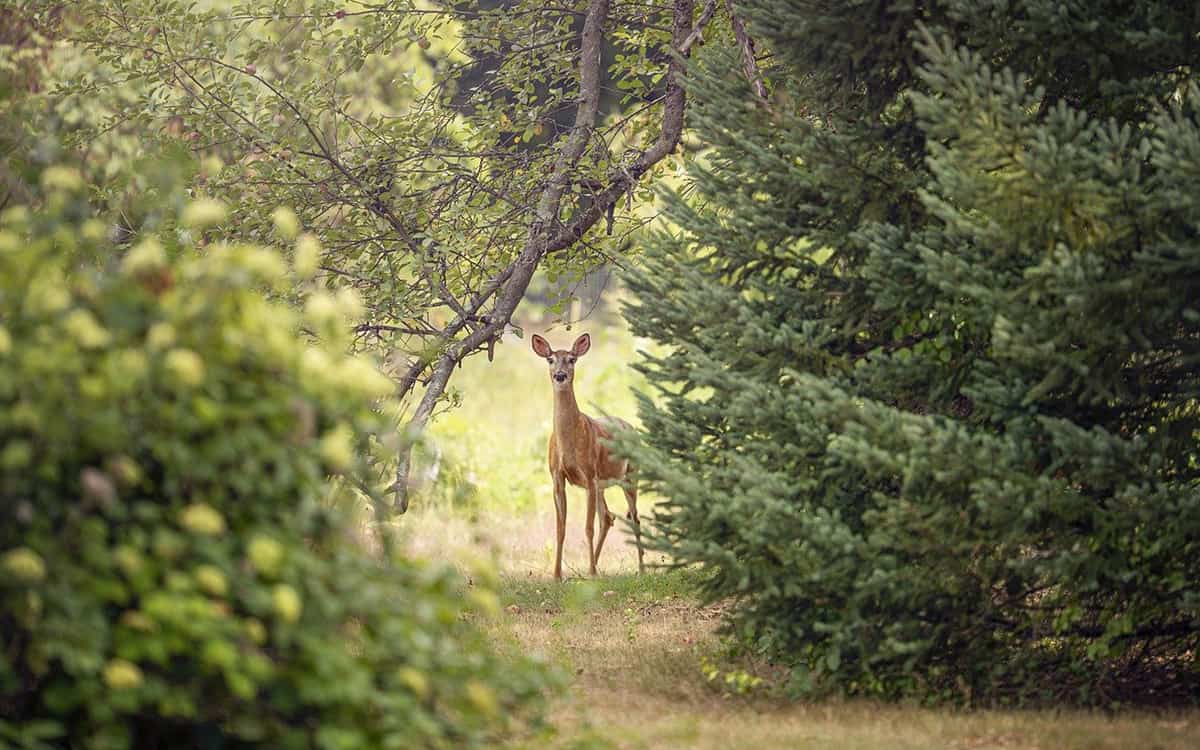
Luring the deer can be done by using grunt and bleat calls. These are devices that produce sounds that can potentially attract a doe or a buck. Hunters use these tools to try and make the deer walk towards their position.
When used, the deer stops momentarily to scan the surroundings. Knowing this, it can be used as a tactic to stop a deer after it has entered the hunter’s comfortable shooting range.
-
Aim for the Vital Spots
Killing a deer with one shot should be the goal of all hunters. However, this is sometimes hard to achieve and is affected by multiple factors like range, the weapon of choice, wind, the prey’s action, and more.
Brain or Neck
Using a rifle and with enough practice, the best part to aim for is the brain. This is a challenging shot because it is a small target, and requires great precision. Despite this, a successful shot is an instant kill.
Another spot to aim for is the neck. However, like aiming for the brain, this requires great precision and experience, but will immediately drop a deer when successfully done.
The Boiler Room
The next part to aim for are the heart and the lungs. Compared to aiming for the head, these are larger organs, that are close together and in theory, are easier to hit. However, this will still depend on how the deer is positioned. Ideally, a hunter would want a deer that is presenting its broadside.
Hitting this spot comes with a risk that the deer will not drop immediately. They can still run away, which means a blood trail needs to be tracked and can be difficult to do at night. To identify the boiler room, look for the space below a deer’s shoulder and slightly above the front legs.
High Shoulders
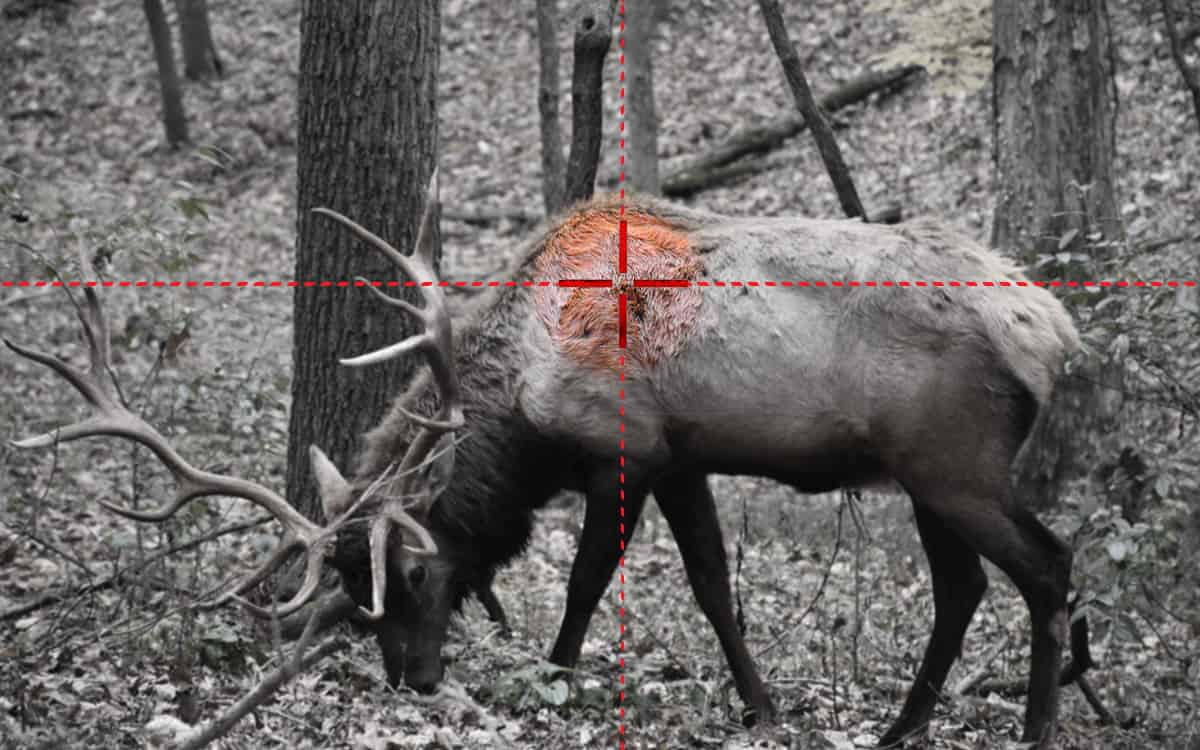
Another area to aim for is the shoulders. A big, fast bullet can easily break the shoulder blades and the spine between them. This will also immediately drop a deer. Although, like aiming for the head and the neck, this requires practice and great accuracy.
Where Not to Aim For
It is unwise to aim anywhere else that can leave the deer alive, or can make it recover. Don’t aim for the legs as deer can still run away even with an injured leg. Hitting the intestinal area should also be avoided as this contaminates the flesh of animals and can impart an off, gamey taste to the deer meat. The intestinal area spans from behind the front legs, up to the hind legs.
Deer is abundant in most parts of North America, and is a great source of meat and hide. For preppers and survivalists, one cannot simply rely on stored food, which can eventually run out. As such, securing food through hunting and gathering is essential for survival.

